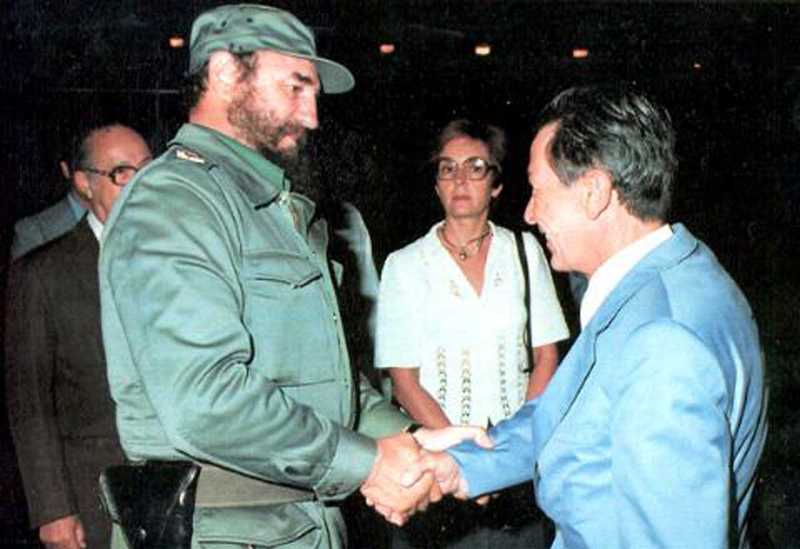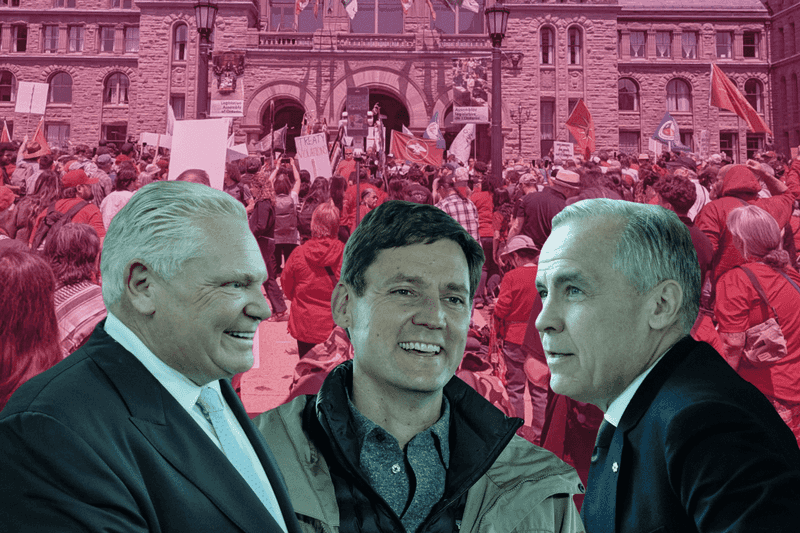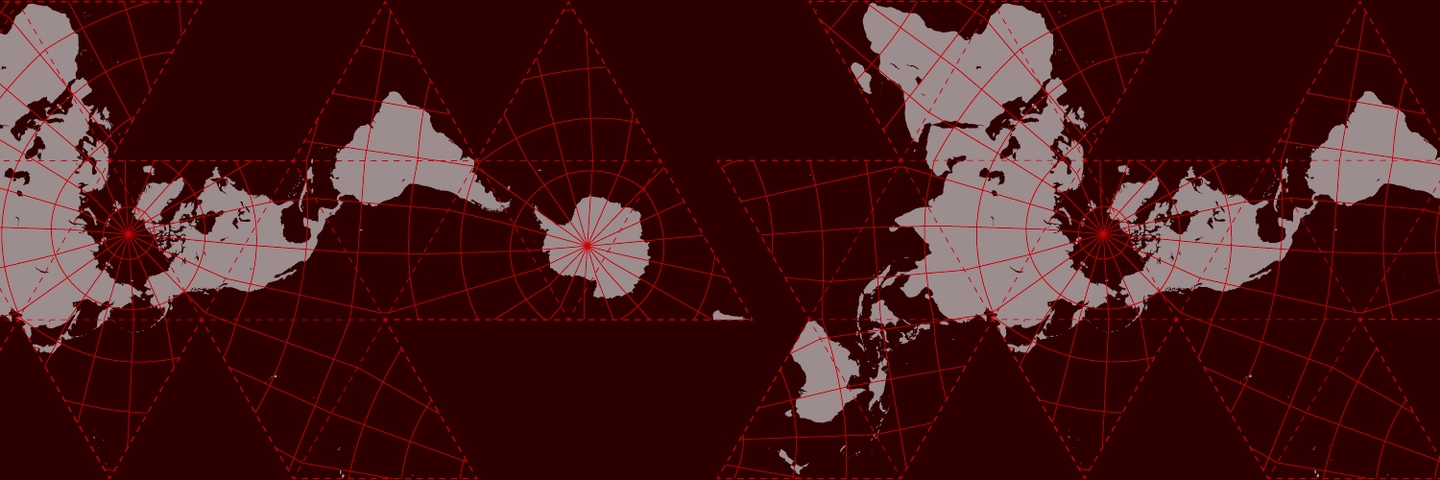“Comrade Berlinguer do not forget that we even get our aspirin from the USSR”. It was with these words that, in October 1981, a long discussion between Fidel Castro and the Secretary of the Italian Communist Party (PCI) came to an end.
Enrico Berlinguer had traveled to Cuba for a trip that would take him to various places throughout Latin America, from López Portillo’s Mexico to Sandinista Nicaragua. In Cuba, Berlinguer debated Castro on a range of topics both theoretical and practical in nature, from the relationship between socialism and democracy to the role of the USSR in the international communist movement. But the New International Economic Order constituted a privileged meeting-point: as President of the Non-Aligned Movement, Castro was curious to hear the perspective of the Secretary of the PCI, a party that had placed North-South relations at the core of its international strategy. Their conversation, and the broader commitment of the PCI to the project of the NIEO, fills a gap in the dominant historical account of this period by pointing to the role of Northern countries — Western Europe’s left parties in particular — as allies and strategic actors in the rise and demise of the NIEO.
The original purpose of Berlinguer’s trip was to promote the Charter for Peace and Development1, a document drafted by Italian Communists with the aim of defining a program for global development. In the footprints of the 1980 Brandt Report2, the Charter was inspired by a new idea of equal cooperation between global North and South. The “new internationalism” of the largest Western Communist Party seemed an important partner for the policies of the Non-Aligned, particularly given the upcoming North-South Summit, which was to be held a few days later in Cancun. Fidel Castro, who had been excluded from the meeting by the Reagan administration, was interested in the Italian perspectives on the NIEO.
“That argument we had with Castro” — this is how Antonio Rubbi, then-head of the PCI Foreign Relations and a member of the delegation that accompanied Berlinguer on his trip to Latin America, described the encounter in a recent interview, before quickly retracting the phrase, and hastening to recall the exceptional affinity felt by Italian Communists for the Cuban leader3. Charged, among others, with drafting the final joint communiqué of the meeting, Rubbi described the subjects of the discussion that took place between Castro and the PCI: the democratic path to socialism, democratic pluralism, and the USSR. Castro’s comment on the subject was incisive in unraveling the different perspectives between a small, embargoed island threatened by neighbouring US, on the one side, and 1970s Italy, on the other: “we are a small country, besieged by the US; here multipartyism was a very bad experience, before the revolution”.
Often blurred and shrouded in the myth of an extraordinary harmony between two differently charismatic personalities, “one imposing and fiery in the olive-green uniform, the other slender and shy”, the anecdotal aestheticization of the protagonists’ recollections fails to completely hide the unsolved crux of the discussions, made between swimming and fishing trips4. The underlying misunderstanding between the two would never be resolved, but the episode remains of interest for us today, for its insight into the debates on the NIEO, and how different ambitions and perspectives were projected onto it.
While a single episode can’t solely represent the reasons behind the fate of the NIEO, assessing these moments of missed opportunities and alliances in the networks built around the NIEO in the 1970s can perhaps help us reflect on important questions about the future before us, and help us in looking at the new balances of a conflict that, albeit in different ways and forms, undoubtedly still runs through the world today. What did the NIEO mean for a “Northern” country like Italy? How many and what different strategies did it conceal under the image of a universal egalitarian banner for the Global South and the Western left?
Recent historiographical interest in the NIEO has provided various insights into the question: “What, exactly, was the New International Economic Order?”. Opening the Special Issue of Humanity in spring 2015 with this question, Nils Gilman describes the NIEO as “like an apparition, an improbable political creature”, appearing “as the figment of a now all but lost political imaginary, sprang forth during a narrow and specific window of geopolitical opportunity”. A “moment of disjunction and openness, when wildly divergent political possibilities suddenly appeared plausible”, something “dramatically alternative”5, radically other than what would soon emerge as “the real new international economic order”6— that is, the neoliberal order. But, as many interpretations have suggested, the NIEO was multiple things at the same time: a project of “worldmaking”, an initiative to reform transnational governance or to radically change international law, the completing/the high point of the process of decolonization and its economic cultures,7 a global Keynesianism or even a global socialism, “the most serious challenge to US global leadership since the end of the Second World War”, and, in the end, a possible alternative globalization8.
This ambitious project of redefining global relations was a ground on which, on the part of both the “South” and the “North”, different visions and hopes were projected, not immediately coinciding, sometimes even opposing each other. In the latter half of the 1970s, the NIEO represented an alternative project of international economic relations – but also of state-market relations – that was a critical part of the competition between different models of global integration. Through this prism, it is possible to look at individual national debates in terms of how they moved within this competition. To shed light on this double level — between an “institutional” level and the broader internal political confrontation — allows us to gain a better understanding of the intertwining of different ambitions and expectations that lay behind this global issue.
The Italian debate on the NIEO was shaped by domestic needs and issues, exemplifying how the challenges of the new global economic interdependencies constituted a ground for competition among different political cultures. The political discussion on the NIEO emerged in the wake of the far-reaching cultural impact provoked by the vast cycle of conflict which began in 1968-1969. In Italy, it developed during a period of great social change that worked as a new driving force for the Italian elites to rethink their responses to the outcomes of modernization processes and deal with domestic social demands for democratization. A first element thus emerges in considering this period as a crucial transition in bringing about a critical rethinking within the major political cultures in response to the overall crisis of legitimacy of the Italian institutional and party system.
Although in different ways – and with different inclinations and purposes – the main Italian parties identified new international strategies as the preferred terrain of this effort. They framed new global issues as part of a broader interpretation of the crisis, linking global and domestic egalitarian claims. This trend was backed by two main influences or traditions: both the reflection on post-colonial experiences fostered by the Communist leadership – inherently related to its “internationalist” identity – as well as the emerging of an ethical-humanitarian interest in the Global South among Catholics following the Second Vatican Council. As early as November 1967, Communist member Renato Sandri had already brought attention to the “presence of great forces that referred to internationalism and ecumenism” to encourage the start of a new Italian focus on the post-colonial world, that should have been based on the values of universalism and global solidarity shared by all major Italian political cultures9. Behind this was the intertwining and competition between two universalist visions, each of which had given rise to its own internationalist networks, especially the Communist one that had always supported the decolonization processes. At the turn of the decade, the Christian Democrats and the Communist leadership began to work out new agendas to bring about – as they said – “the pressing need of new times”10. According to the Christian Democrats Aldo Moro and Luigi Granelli – who would lead the Italian Foreign Ministry almost continuously from 1969 to 1974 – the “moral awakening of the new generations” gave rise to the overcoming of anachronistic divisions, moving towards a “new and different international order”.
This effort resulted first and foremost in Italy’s growing commitment to the European project. Author Giuliano Garavini showed how the EC’s new relationship with developing countries and support for the New International Economic Order were part of a broader discussion among European elites on the consequences of the oil crisis and the reconsideration of the Community’s new role in a global context11. The vision of the Italian Foreign Ministry (expressed in these years by the Christian Democrats’ left wing) reflected those European approaches aimed at maximizing the potential of the EC’s enlargement to achieve a “qualitative leap”12 that could meet the expectations of both European public opinion and those of the developing world. Within this framework, it was the issue of political and economic relations with the Global South – as well as several specific debates on the NIEO – that represented a crucial first experience of political dialogue, as demonstrated by the birth of the Institute for relations between Italy and the countries of Africa, Latin America, and the Middle East in 1972, on the initiative of the Christian Democrats’ left wing, the Socialists and the Communists.
The economic challenges facing Italy, driven in part by the oil crisis, had the effect of sharpening the debate on the relationship between Southern development and Western standards of living. Thus, for example, in February 1974, Ugo La Malfa, the Republican Party Minister of the Treasury, committed to passing his austerity policy by highlighting how “the transfer of resources from developed to oil-producing countries, as a result of the change in the terms of trade” would necessarily lead to “a restriction of domestic consumption in the industrialized countries”. To such statements, Communist Senator Napoleone Colajanni replied that his party rejected “precisely this conception of Third World development as necessarily linked to a halt and a compression of the standard of living of the working masses of the industrialized countries”, considering it “not necessary in absolute terms” but rather “intrinsically linked to the workings of the capitalist system”13.
To Aldo Moro, the transition “from the rhetorical to the political phase” of relations with the developing world needed a “slowing of growth” necessary to “allow the progress of others”14. At the same time, the PCI’s international policy stimulated an in-depth analysis linking North-South relations with the rethinking of Western societies’ economic structures. These theories, processed in tune with the political lines of the European social democracies within the framework of “Eurocommunism”, demanded a new conception of development, based on the global redistribution in terms of a “qualitative” rather than exclusively quantitative growth15. Indeed, the fundamental premise of Berlinguer’s well-known “austerity policy” was the re-elaboration of the Western model of production and consumption, in close connection with the development of the Global South16. This proposal was highly compatible with that of the promoters of the NIEO and the categories of its fundamental theoretical framework – the ambitious vision of global redistribution and the centrality of the notion of sovereignty. Between 1973 and 1976, the Communists would develop, in parallel, the idea of “introducing elements of socialism”17 into Italian society and the need to move towards a “new international division of labor” within an overall analysis that looked at the current economic crisis as a systemic crisis of capitalism, affecting the entire structure of global value chains. This would have required the “theoretical and practical initiative of the working-class vanguard and democratic forces of Western Europe” which would have had to match the thrust of the developing countries in a common struggle. As Renato Sandri pointed out in June 1974, the need for such an initiative would require a new vision of interdependence, “so that the approaching crossroads would not result in a further polarization of imperialist domination but in an international division in which interdependence would no longer be that fable of the wolf and the lamb”18.

As political confrontation expanded, ironically the potential Italian role on the international scene was further reduced. Italian economic crisis and social conflict became a source of special attention within the multilateral Euro-Atlantic framework, constraining Italian policy, especially in the monetary field, which would later take the form of financial aid packages placed under political conditions. Italy would become the object of close monitoring as part of a change of pace in the instruments of U.S. foreign policy, defined by some authors as a shift from the “rigid containment” to a phase of “concerted stabilization19. This trend was also solicited by certain domestic concerns: “What is at stake”, La Malfa complained in February, “is the issue of who is running the country, the unions or the government”20. The position taken by the Italian government at the UN Sixth Special Session was within this framework, as was the one taken at the vote on the Charter of Economic Rights and Duties of States21 in late 1974, in which Italy eventually abstained along with some of the leading European countries, after long and arduous negotiations with the United States. As U.S. ambassador John Anthony Volpe concluded about the vote on the Charter, Italy was “perfectly willing to take the heat from LDCs [Least Developed Countries] on this issue, but not at the cost of being isolated within European Community”22.
As the European Community set out to negotiate the Lomé Convention23, different international fora were being arranged outside the equal and global framework of the United Nations. The launch of exclusive meetings between Western technocratic elite would become increasingly influential in the years that followed, affecting the fates of both the NIEO project and the difficult Italian political balance24. Some authors have effectively shown the close link and parallel proceeding between stabilization projects, towards the containment of both Western leftists and the demands of the Global South, also pointing out how parties such as the PCI ended up being tied down by their own internal legitimation strategies and — willingly or unwillingly — going along with these outcomes25.
The debate between political visions coexisted with a profound divide within the institutional system, leading to an era in which international policies swung between innovative impulses and stark re-stabilization. The NIEO debate was part of such a competition and clash between different visions and formulas for exiting the crisis, demonstrating how domestic designs were also based on and legitimized by reference to external models of global integration. Such a twofold trend characterized the ways in which Italian political elites faced the major global transformations that occurred at the turn of the 1970s, showing the multilevel relationship Italy established with such processes. On the one hand, Italy was particularly exposed to the new global economic interdependences, suffering first the immediate economic implications, then consequent political constraints; on the other hand, international issues, including the NIEO, became a ground on which different efforts to shift the domestic political balance were exercised.
While the NIEO may appear today retrospectively as an announced failure, these histories serve as reminder that the NIEO seemed to be surprisingly credible in its most successful moment26, a hope or a threat to the global order, arousing even disproportionate irritation in its contemporary critics, if not even the redefinition of their own international strategies27. As Quinn Slobodian pointed out, “understanding the irritation means recognizing that the NIEO was not acting alone” but it found influential allies in the North, from “global reformists”, economists and social democrats to European leftists28. In this regard, it seems useful today to ask whether, in addition to a new South-South cooperation, it is possible to rethink a North-South cooperation, starting precisely from those missed opportunities or alliances past left unresolved.
Historians often rush to warn against hurried comparisons, analogies, or parallels between ages and times. However, the importance, not just nominal but political, of the recent revival of an idea of South-South cooperation, whose call for alternative models of solidarity-based and non-hierarchical global integration is explicit, should not escape us. Recognizing the political relevance of such a reference is not to fail to see the differences between one period and another, or the contradictions that lie beneath the homogenizing banner of “Global South” — the “Global South” after all has never been homogenous, it was not in the 1970s and it is not today. But the viewpoint of the researcher and historian, accurate to specificities and differences, can (and must) sometimes give way to the no less necessary political outlook.
And it is thus precisely in a political perspective that we should start again from where the meetings, connections and networks built around the NIEO in the 1970s had failed. Silvio Pons has effectively explained how Berlinguer's trip to Latin America had been a disappointment for the PCI, particularly with respect to the party's ambitions to relaunch its traditional vocation as transnational mediator and its role as a “bridge between different worlds”, within a project of “interaction and interpenetration between European reformist communism and anti-imperialist traditions outside Europe”. According to Pons, after Tito's death, the Non-Aligned Movement under the Cuban presidency had represented a “radicalisation that denied the reformist assumptions of a rebalance between North and South and reflected the growing fragmentation of political subjects in the global South”. The PCI therefore intended to act as a key interlocutor partner to restore convergence of networks and relations around the NIEO project29.
From this point of view, two different political strategies clashed in the meeting between Castro and Berlinguer, both very much informed by the respective position that Cuba and the PCI thought they should hold within the international communist movement at the time, and the resulting new tactics as sources of identity and legitimacy. In turn, these assessments were profoundly related to the context in which they developed and acted as political actors, and thus to the specific positioning of the two countries in the balances of the global economy. Corresponding to these two strategies were two different visions and interpretations of the NIEO as a political project, beneath which lay distinct ideas of the relationship between anti-imperialist struggle, democracy and development.
As we saw above, Berlinguer's “austerity” political project was also based on the assumption of a convergence and shared interests between the popular classes of the West and the collective struggle of the developing countries. But that vision failed, just as the meeting between Castro and Berlinguer revealed the limitations of an authentic political understanding.
The defeat of the NIEO and the emerging of the neo-liberal model represented both the revival of class struggle from above and the return of hierarchical conceptions of global integration. We all lost from this. At the same time, however, the winners in this story were not only in the North. Today, globalization processes have in many ways redefined the core-periphery balances and structures of the world30. The terrain of struggle remains one not exclusively of “the West and the rest” but also between global rich and poor. It is a matter of understanding on what to base this convergence and working on the deconstruction and demystification of false differences and identities. Above all, it is about being able to find a way to imagine — and, possibly, achieve — a world in which real differences and identities are integrated into a collective and cooperative vision, instead of being declined into domination hierarchies or conflicting strategies. But this first requires asking whether the structural and systemic conditions for this convergence exist today. Are they better than they were in the 1970s? What are the interests that Western leftists want to represent? Are they compatible and convergent with a new collective struggle of the Global South? These are the real challenges of this fundamentally emancipatory, progressive, and timely struggle, and which can perhaps provide some elements to reconstruct a dialogue between different points of view left unresolved in the meeting between Castro and Berlinguer.

Martina Marchesi is a PhD candidate at the Scuola Normale Superiore.




